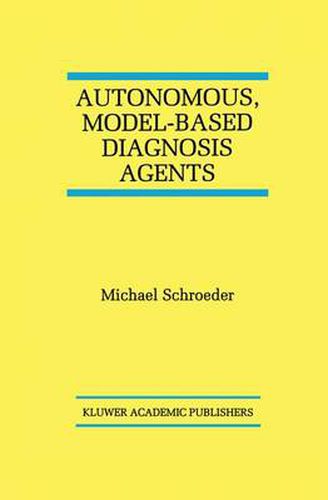Readings Newsletter
Become a Readings Member to make your shopping experience even easier.
Sign in or sign up for free!
You’re not far away from qualifying for FREE standard shipping within Australia
You’ve qualified for FREE standard shipping within Australia
The cart is loading…






This title is printed to order. This book may have been self-published. If so, we cannot guarantee the quality of the content. In the main most books will have gone through the editing process however some may not. We therefore suggest that you be aware of this before ordering this book. If in doubt check either the author or publisher’s details as we are unable to accept any returns unless they are faulty. Please contact us if you have any questions.
Autonomous, Model-Based Diagnosis Agents defines and describes the implementation of an architecture for autonomous, model-based diagnosis agents. It does this by developing a logic programming approach for model-based diagnosis and introducing strategies to deal with more complex diagnosis problems, and then embedding the diagnosis framework into the agent architecture of vivid agents.
Autonomous, Model-Based Diagnosis Agents surveys extended logic programming and shows how this expressive language is used to model diagnosis problems stemming from applications such as digital circuits, traffic control, integrity checking of a chemical database, alarm-correlation in cellular phone networks, diagnosis of an automatic mirror furnace, and diagnosis of communication protocols. The book reviews a bottom-up algorithm to remove contradiction from extended logic programs and substantially improves it by top-down evaluation of extended logic programs. Both algorithms are evaluated in the circuit domain including some of the ISCAS85 benchmark circuits.
This comprehensive in-depth study of concepts, architectures, and implementation of autonomous, model-based diagnosis agents will be of great value for researchers, engineers, and graduate students with a background in artificial intelligence. For practitioners, it provides three main contributions: first, it provides many examples from diverse areas such as alarm correlation in phone networks to inconsistency checking in databases; second, it describes an architecture to develop agents; and third, it describes a sophisticated and declarative implementation of the concepts and architectures introduced.
$9.00 standard shipping within Australia
FREE standard shipping within Australia for orders over $100.00
Express & International shipping calculated at checkout
This title is printed to order. This book may have been self-published. If so, we cannot guarantee the quality of the content. In the main most books will have gone through the editing process however some may not. We therefore suggest that you be aware of this before ordering this book. If in doubt check either the author or publisher’s details as we are unable to accept any returns unless they are faulty. Please contact us if you have any questions.
Autonomous, Model-Based Diagnosis Agents defines and describes the implementation of an architecture for autonomous, model-based diagnosis agents. It does this by developing a logic programming approach for model-based diagnosis and introducing strategies to deal with more complex diagnosis problems, and then embedding the diagnosis framework into the agent architecture of vivid agents.
Autonomous, Model-Based Diagnosis Agents surveys extended logic programming and shows how this expressive language is used to model diagnosis problems stemming from applications such as digital circuits, traffic control, integrity checking of a chemical database, alarm-correlation in cellular phone networks, diagnosis of an automatic mirror furnace, and diagnosis of communication protocols. The book reviews a bottom-up algorithm to remove contradiction from extended logic programs and substantially improves it by top-down evaluation of extended logic programs. Both algorithms are evaluated in the circuit domain including some of the ISCAS85 benchmark circuits.
This comprehensive in-depth study of concepts, architectures, and implementation of autonomous, model-based diagnosis agents will be of great value for researchers, engineers, and graduate students with a background in artificial intelligence. For practitioners, it provides three main contributions: first, it provides many examples from diverse areas such as alarm correlation in phone networks to inconsistency checking in databases; second, it describes an architecture to develop agents; and third, it describes a sophisticated and declarative implementation of the concepts and architectures introduced.